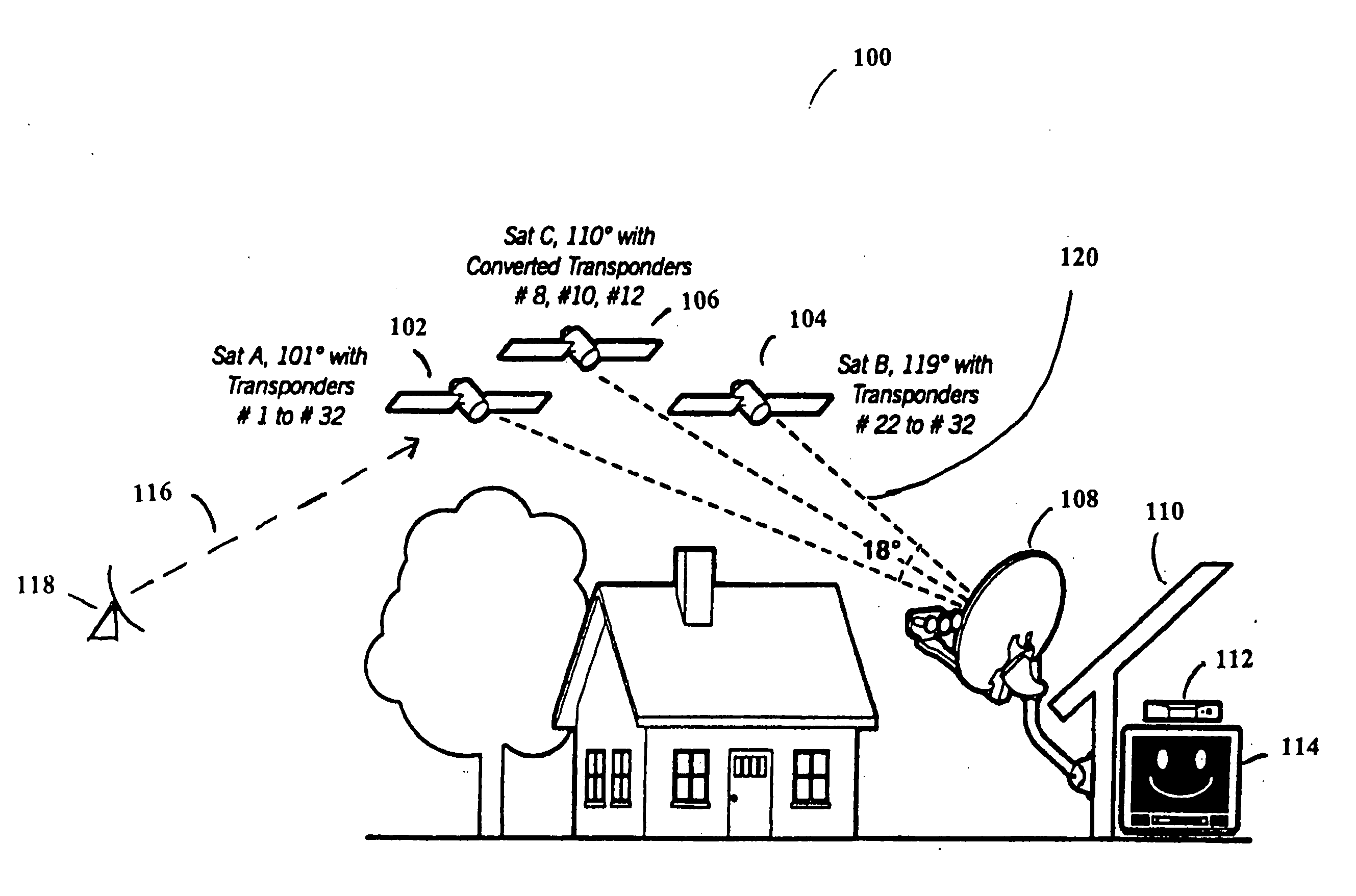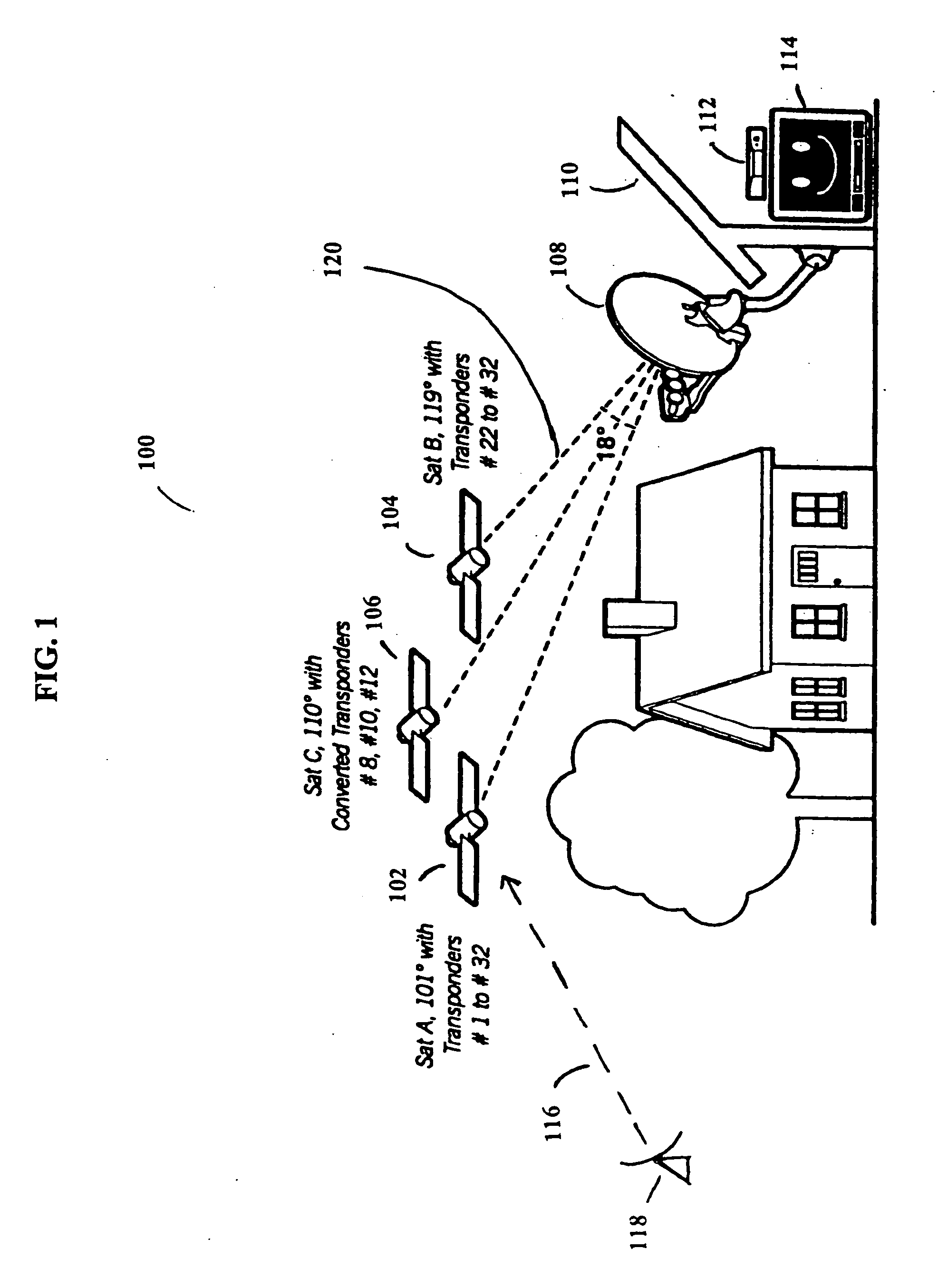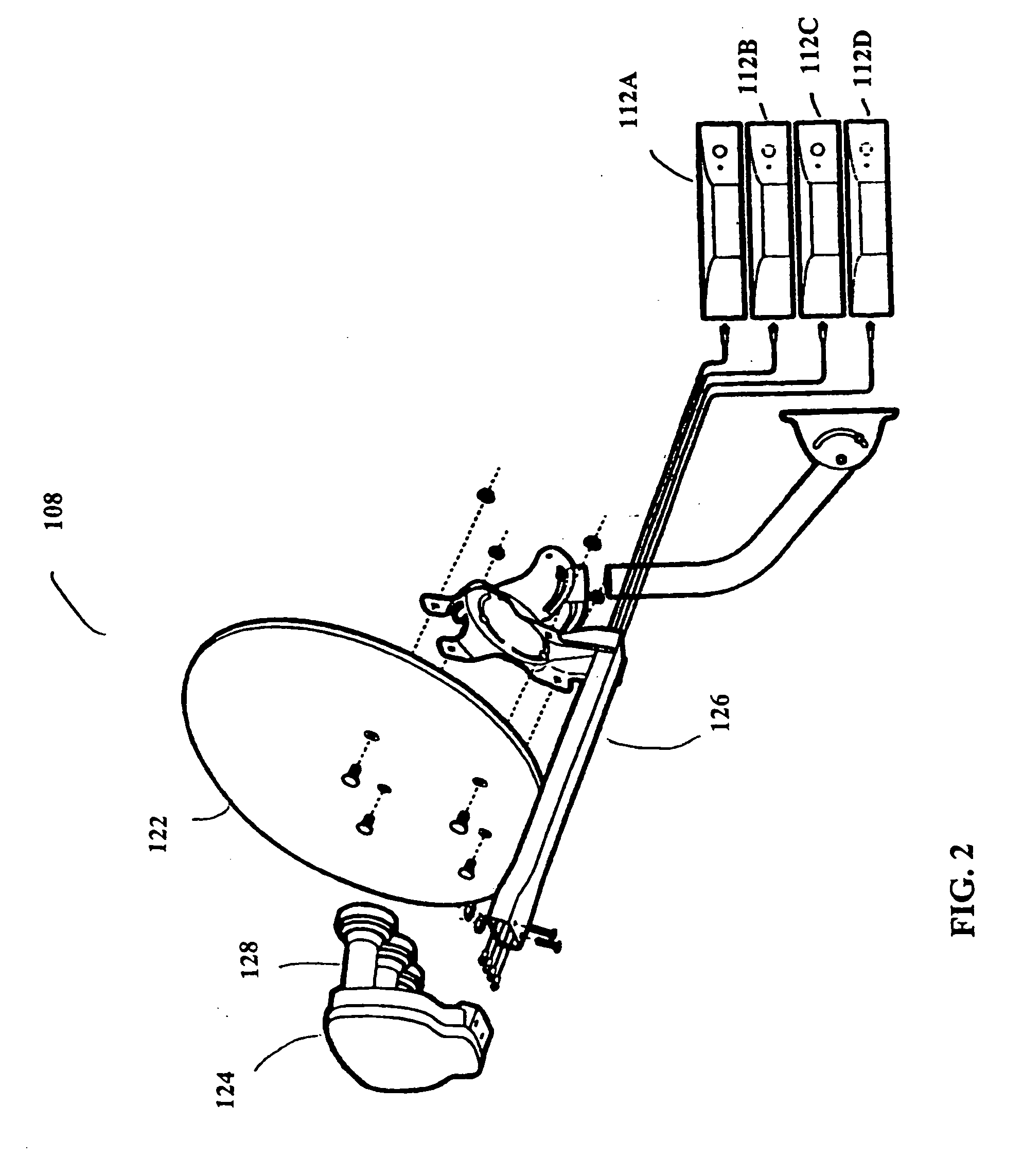Triple band combining approach to satellite signal distribution
a satellite signal and triple band technology, applied in the field of satellite receiver systems, can solve the problems of limiting the usefulness of this frequency combining feature and rendering useless the information transmitted in the downlink signal
- Summary
- Abstract
- Description
- Claims
- Application Information
AI Technical Summary
Problems solved by technology
Method used
Image
Examples
Embodiment Construction
[0035] In the following description, reference is made to the accompanying drawings which form a part hereof, and which show, by way of illustration, several embodiments of the present invention. It is understood that other embodiments may be utilized and structural changes may be made without departing from the scope of the present invention.
Overview
[0036] Currently, there are three orbital slots, each comprising one or more satellites, delivering direct-broadcast television programming signals to the various ODUs 108. However, ground systems that currently receive these signals cannot accommodate additional satellite signals without adding more cables, and cannot process the additional signals that will be used to transmit the growing complement of high-definition television (HDTV) signals. The HDTV signals can be broadcast from the existing satellite constellation, or broadcast from the additional satellite(s) that will be placed in geosynchronous orbit. The orbital locations ...
PUM
 Login to View More
Login to View More Abstract
Description
Claims
Application Information
 Login to View More
Login to View More - R&D
- Intellectual Property
- Life Sciences
- Materials
- Tech Scout
- Unparalleled Data Quality
- Higher Quality Content
- 60% Fewer Hallucinations
Browse by: Latest US Patents, China's latest patents, Technical Efficacy Thesaurus, Application Domain, Technology Topic, Popular Technical Reports.
© 2025 PatSnap. All rights reserved.Legal|Privacy policy|Modern Slavery Act Transparency Statement|Sitemap|About US| Contact US: help@patsnap.com



